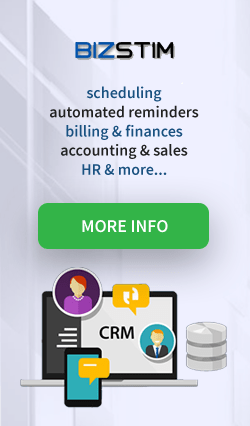
Welcome to the complete SEO checklist for 2023. In this article you will find all the essential SEO strategies you need to improve your website's organic traffic and Google rankings. By following this checklist you can ensure that you're implementing the most effective SEO techniques for the upcoming year.
Search engine optimization is crucial for your online success. By optimizing your website using the complete SEO checklist, you will be able to gain more organic traffic and improve your rankings on Google. This checklist has been proven to work across various industries, from e-commerce to local businesses and affiliate sites.
Throughout this article, we will cover all aspects of SEO, including technical SEO, on-page SEO, keyword research, content optimization and link building. You'll learn how to optimize your website's technical elements, find relevant keywords, optimize your content and build high-quality backlinks.
SEO Basics Checklist
As you dive into the world of SEO, it's important to lay the groundwork by implementing the essential SEO basics. These foundational elements will ensure that your website is set up for success and can be easily optimized for search engines. In this section, we will explore the key components of the SEO Basics Checklist.
Setting Up Google Search Console and Bing Webmaster Tools
To start, it is crucial to set up Google Search Console and Bing Webmaster Tools. These platforms provide valuable insights into how search engines view and interact with your website. They allow you to monitor your site's performance, identify any issues or errors and submit sitemaps for better search engine indexing. By regularly checking these tools, you can stay on top of any technical issues and ensure that your site is visible to search engines.
Installing Google Analytics for Actionable Data
In addition to Search Console and Webmaster Tools, installing Google Analytics is a must. This powerful tool provides in-depth analytics and data about your website's performance, user behavior and traffic sources. Analyzing this data will help you make informed decisions and optimize your site further. With Google Analytics, you can track organic traffic, user engagement, bounce rates and more, allowing you to refine your SEO strategies based on real-time data.
Utilizing Yoast SEO for WordPress Users
If you're using WordPress as your content management system, the Yoast SEO plugin is a valuable tool to optimize your website. Yoast SEO offers a range of features to help you improve your on-page SEO. It provides suggestions for optimizing meta titles and descriptions, generates XML sitemaps, analyzes your content for keyword inclusion and offers readability checks. By implementing Yoast SEO and following its recommendations, you can effectively optimize your WordPress site for search engines.
By following the SEO Basics Checklist, you will establish a strong foundation for your SEO efforts. Setting up Google Search Console and Bing Webmaster Tools, installing Google Analytics and utilizing Yoast SEO are crucial steps that will enable you to monitor and optimize your website effectively. These tools will provide valuable insights, data and recommendations that will help you improve your site's visibility, attract organic traffic and ultimately achieve your SEO goals.




Keyword Research Checklist
The Keyword Research Checklist is an essential tool for optimizing your website's content and improving its visibility in search engine results. By conducting thorough keyword research, you can discover the phrases and terms that your target audience is searching for, allowing you to create content that meets their needs and attracts organic traffic to your website. Here are some steps to follow when conducting keyword research:
1. Explore Long Tail Keywords
Long tail keywords are longer and more specific keyword phrases that have lower search volumes but higher conversion rates. They can help you target a narrower audience and improve the relevancy of your content. Use tools like Google Suggest and Answer The Public to uncover long tail keywords that are relevant to your industry or niche.
2. Use Google Keyword Planner
Google Keyword Planner is a powerful tool that allows you to find keyword ideas, search volume and competition data. It provides valuable insights into the popularity and competitiveness of keywords, helping you make informed decisions about which ones to target. Use this tool to identify keywords that have a good balance between search volume and competition.
3. Tap into Online Communities
Online communities like Reddit and Quora are goldmines for keyword ideas. By exploring the questions and discussions in these communities, you can gain valuable insights into the topics your target audience is interested in. Look for keywords that are frequently mentioned or have a high number of upvotes, as these indicate popular and relevant topics.
4. Utilize Keyword Research Tools
In addition to Google Keyword Planner, there are various keyword research tools available that can help you uncover valuable keywords. KWFinder is a popular tool that provides in-depth keyword analysis, including search volume, keyword difficulty and related keywords. Experiment with different tools to find the ones that best suit your needs and budget.
By following this Keyword Research Checklist, you can identify the most relevant and high-performing keywords for your website. Incorporating these keywords strategically into your content will increase its visibility, attract organic traffic and boost your website's rankings in search engine results.
| Benefits of Keyword Research | Tools to Use |
|---|---|
| Improved relevancy of content | Google Keyword Planner |
| Increased organic traffic | KWFinder |
| Higher conversion rates | Answer The Public |
| Better targeting of audience | Google Suggest |

On-Page SEO Checklist
In order to optimize your webpages for search engines and improve your organic rankings, it is essential to focus on on-page SEO. By following the on-page SEO checklist below, you can ensure that your content is properly optimized for maximum visibility and relevance.
Title Tag Optimization
The title tag is one of the most important on-page SEO factors. It is the first thing that search engines and users see when they come across your webpage in the search results. Make sure to include relevant keywords in your title tag to improve your rankings.
For example, if you are writing a blog post about the best hiking trails in California, a good title tag could be: "The Ultimate Guide to the Best Hiking Trails in California - Your Website Name". Including the keywords "best hiking trails in California" in your title tag will help search engines understand what your webpage is about and rank it accordingly.
Meta Description Optimization
The meta description is a brief summary of your webpage that appears below the title tag in the search results. Although it does not directly impact rankings, it plays a crucial role in attracting users to click on your webpage.
When optimizing your meta description, make sure to include relevant keywords and create a compelling description that encourages users to click through to your webpage. Keep it concise, around 150-160 characters and make it unique for each page.
Header Tag Optimization
Header tags (H1, H2, H3, etc.) are used to structure your content and make it easy to read for both users and search engines. It is important to include your target keywords in your header tags to signal the relevance of your content.
For example, if you are writing a blog post about healthy breakfast recipes, you can use header tags to highlight different sections such as "Delicious Oatmeal Recipes" (H2), "Nutritious Smoothie Ideas" (H2) and "Easy Egg-based Dishes" (H2). This helps both users and search engines understand the main topics covered in your content.
Image Optimization
Optimizing images on your webpage can improve both the user experience and your SEO efforts. When adding images to your webpage, make sure to follow these image optimization best practices:
- Use descriptive filenames for your images, including relevant keywords.
- Add alt text to describe the content of your images. This helps search engines understand what the image is about and can improve your rankings in image search.
- Compress your images to reduce file size and improve page load speed.
By following these on-page SEO strategies, you can ensure that your webpages are optimized for search engines and improve your organic rankings. Remember to create high-quality, valuable content that meets the needs of your target audience, as this is the foundation of a successful SEO strategy.
Technical SEO Checklist
In order to optimize your website for search engines, it's important to pay attention to the technical aspects of SEO. This checklist covers key elements that can have a significant impact on your website's visibility and performance. By following these guidelines, you can ensure that your website is well-optimized for search engines.
1. Crawl Errors
The first step in optimizing your website's technical SEO is to identify and fix any crawl errors. Crawl errors can prevent search engines from properly indexing your website, leading to decreased visibility in search results. Use Google Search Console or other SEO tools to identify crawl errors and resolve them promptly.
2. Sitemaps
Creating and submitting a sitemap is essential for helping search engines discover and index your important web pages. A sitemap is like a roadmap for search engine bots, telling them which pages to crawl and how often to visit. Ensure that your sitemap is up to date, error-free and includes all relevant pages on your website.
3. Schema Markup
Implementing schema markup on your website can enhance your search engine presence by providing structured data to search engines. Schema markup helps search engines understand the content on your website better, resulting in more informative search results for users. Use schema markup to mark up key elements such as products, reviews, events and more.
4. Mobile-Friendliness
In today's mobile-first world, it's crucial to ensure that your website is mobile-friendly. Mobile-friendliness is a ranking factor in search engine algorithms and a responsive website design can improve user experience on mobile devices. Test your website's mobile-friendliness using Google's Mobile-Friendly Test and make necessary optimizations.
5. Page Speed
Page speed is another important factor that can impact your website's rankings and user experience. Slow-loading pages may lead to higher bounce rates and lower search engine rankings. Use tools like Google PageSpeed Insights to analyze your website's performance and make optimizations to improve page speed.
6. HTTPS
Implementing HTTPS encryption on your website is not only essential for security but also for SEO. Websites with HTTPS are favored by search engines and Google has confirmed that it's a ranking signal. Secure your website with an SSL certificate to ensure that all data exchanged between your website and users is encrypted.
| Task | Priority | Status | |
|---|---|---|---|
| 1 | Resolve crawl errors | High | In Progress |
| 2 | Create and submit sitemap | High | Completed |
| 3 | Implement schema markup | Medium | Not Started |
| 4 | Optimize for mobile-friendliness | High | In Progress |
| 5 | Improve page speed | High | Not Started |
| 6 | Secure website with HTTPS | High | Completed |
Use this table to track your progress in implementing the technical SEO checklist. Assign priorities to each task and update the status as you complete them. Regularly reviewing and optimizing these technical aspects will help ensure that your website is well-optimized for search engines and provides a seamless user experience.
Content Checklist
Optimizing the content on your website is crucial for improving its search engine visibility and attracting organic traffic. By focusing on content optimization, you can ensure that your website provides value to users and aligns with search engine ranking factors. In this section, we will explore the essential elements of a content checklist that will help you create high-quality, engaging and SEO-friendly content for your website.
One of the key aspects of content optimization is ensuring that your content is of high quality. This means that it should be accurate, well-researched and relevant to your target audience. By providing valuable and informative content, you can establish yourself as an authority in your industry and attract more organic traffic to your website.
Readability is another important factor to consider when optimizing your content. Make sure that your writing is clear, concise and easy to understand. Use subheadings, bullet points and numbered lists to break up your content into readable chunks. Additionally, consider using shorter sentences and paragraphs to improve the overall readability of your content.
Formatting plays a significant role in content optimization as well. Use proper headings (h2, h3) to structure your content and make it easier for both users and search engines to navigate. Incorporate internal links to other relevant pages on your website to enhance the user experience and improve the overall SEO of your content. Lastly, don't forget to include engaging visual content such as images, videos and infographics to make your content visually appealing and grab the attention of your audience.
| Content Checklist | Description |
|---|---|
| Quality Content | Create accurate, well-researched and relevant content that provides value to your audience. |
| Readability | Make your content easy to read and understand by using clear and concise writing, subheadings and bullet points. |
| Formatting | Structure your content with proper headings, incorporate internal links and include engaging visual content. |
By following this content checklist, you can ensure that your website provides valuable, engaging and optimized content that will attract both users and search engines. Remember to regularly update and improve your content to stay relevant and competitive in the online space.
Link Building Checklist
Building high-quality backlinks is an essential component of any successful SEO strategy. Backlinks act as a vote of confidence from other websites, signaling to search engines that your website is trustworthy and authoritative. However, it's not just about acquiring any backlinks; it's about obtaining relevant and high-quality backlinks that will have the most significant impact on your website's rankings.
Competitor Analysis
A key step in the link building process is conducting competitor analysis. By analyzing the backlink profiles of your competitors, you can identify opportunities to replicate their successes and gain an edge in the search results. Look for websites that are linking to multiple competitors but not to your own website. Reach out to these websites and offer them valuable content or resources that they can link back to. This approach can help you build relationships with influential websites in your industry and earn high-quality backlinks.
Broken Link Building
Another effective link building strategy is broken link building. This technique involves finding broken links on reputable websites within your niche and reaching out to the webmasters to inform them of the broken link and offer an alternative resource from your own website. This not only helps the webmasters fix their broken links but also provides an opportunity for you to secure a valuable backlink. Make sure to identify broken links that are relevant to your content and provide a resource that adds value to the website.
Local and Industry Directories
Utilizing local and industry directories is a tried-and-true link building tactic. These directories provide an opportunity to build relevant backlinks and increase your website's visibility within your target audience. Look for directories that are specific to your industry or locality and ensure that they have a strong reputation. Submit your website with accurate and up-to-date information to these directories and you'll start to build authoritative backlinks that can positively impact your search rankings.
| Link Building Strategy | Description |
|---|---|
| Competitor Analysis | Identify backlink opportunities by analyzing competitors' link profiles. |
| Broken Link Building | Find broken links on reputable websites and offer alternative resources. |
| Local and Industry Directories | Submit your website to relevant directories to gain backlinks. |
Remember, the key to successful link building is to focus on quality over quantity. Building a few high-quality and relevant backlinks will have a more significant impact on your website's rankings than acquiring numerous low-quality backlinks. By implementing the strategies outlined in this link building checklist, you can improve your website's authority and visibility in search engine results.


Conclusion
Congratulations on completing the comprehensive SEO checklist for 2023. By implementing these SEO strategies, you are on your way to online success. Improving your website's rankings and gaining organic traffic are crucial steps towards achieving your goals.
Remember, search engine optimization is an ongoing process and staying up-to-date with the latest trends is essential. By following this checklist, you are ensuring that your website is optimized for maximum visibility and success in search engine results.
Continue to monitor your website's performance, analyze data and stay informed about new SEO techniques. Regularly updating and improving your website's content, technical aspects and link building efforts will help you maintain a competitive edge.
Thanks for joining us on this SEO journey. Now it's time to apply these strategies, track your progress and watch your website rise in the rankings. Good luck!
Did we omit anything important from the SEO checklist?









